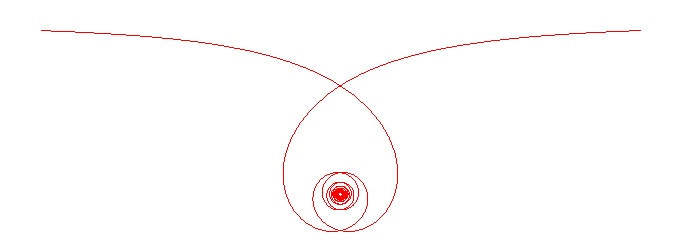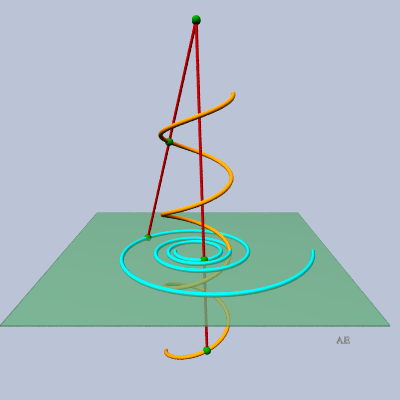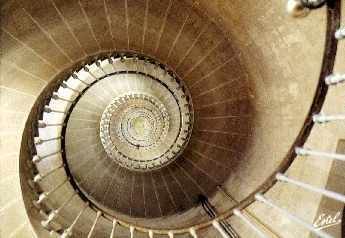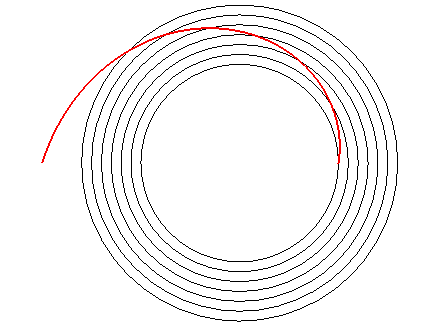RECIPROCAL SPIRAL

| next curve | previous curve | 2D curves | 3D curves | surfaces | fractals | polyhedra |
RECIPROCAL SPIRAL

| Curve studied by P. Nicolas in 1696, Varignon in 1704, Bernoulli in 1710 and Cotes in 1722. |
| Polar equation: Curvilinear abscissa: Radius of curvature: Transcendental curve. |

Like the logarithmic spiral, it has a spiralling branch with an asymptotic point, but, contrary to the logarithmic spiral, its length is infinite.
Necessary and sufficient condition: curve for which the polar sub-tangent is constant.
It can also be obtained as
- the inverse
of the Archimedean spiral
- the orthocaustic
of the
tractrix spiral
with respect to the centre.
- the plane conical projection (the centre of the projection
being on the axis and the plane of projection being perpendicular to this
axis) of a circular
helix (theorem of Théodore Olivier).
 |
It is the reason why the plunging view of a snail stairway
is a reciprocal spiral.
See also this webpage of Gerard Lavau. |
 |
The curve providing the starting points of runners on
a circular stadium is a reciprocal spiral:

|
 |
When a reciprocal spiral rolls on a line, its pole describes a tractrix, whereas when it rolls on a logarithmic curve, its pole describes a line.
The reciprocal spiral is the solution to the problem that
consists in determining the trajectory in space of a massive point subject
to a force centred on O and proportional to
(this force is, according to the Binet formula, proportional to
which, here, is equal to
,
with
);
the other solutions are the epispirals and
the Poinsot spirals, see
this
link.
See also the hyperbolic conical spiral, and compare to the SiCi spiral.
Doesn't the reciprocal spiral remind of the tail of a chameleon?

| next curve | previous curve | 2D curves | 3D curves | surfaces | fractals | polyhedra |
© Robert FERRÉOL 2017